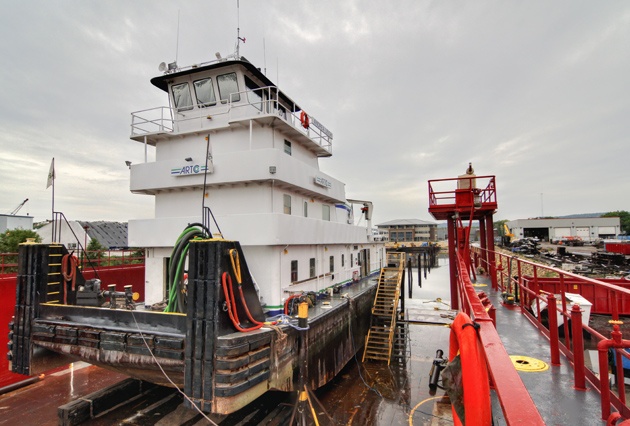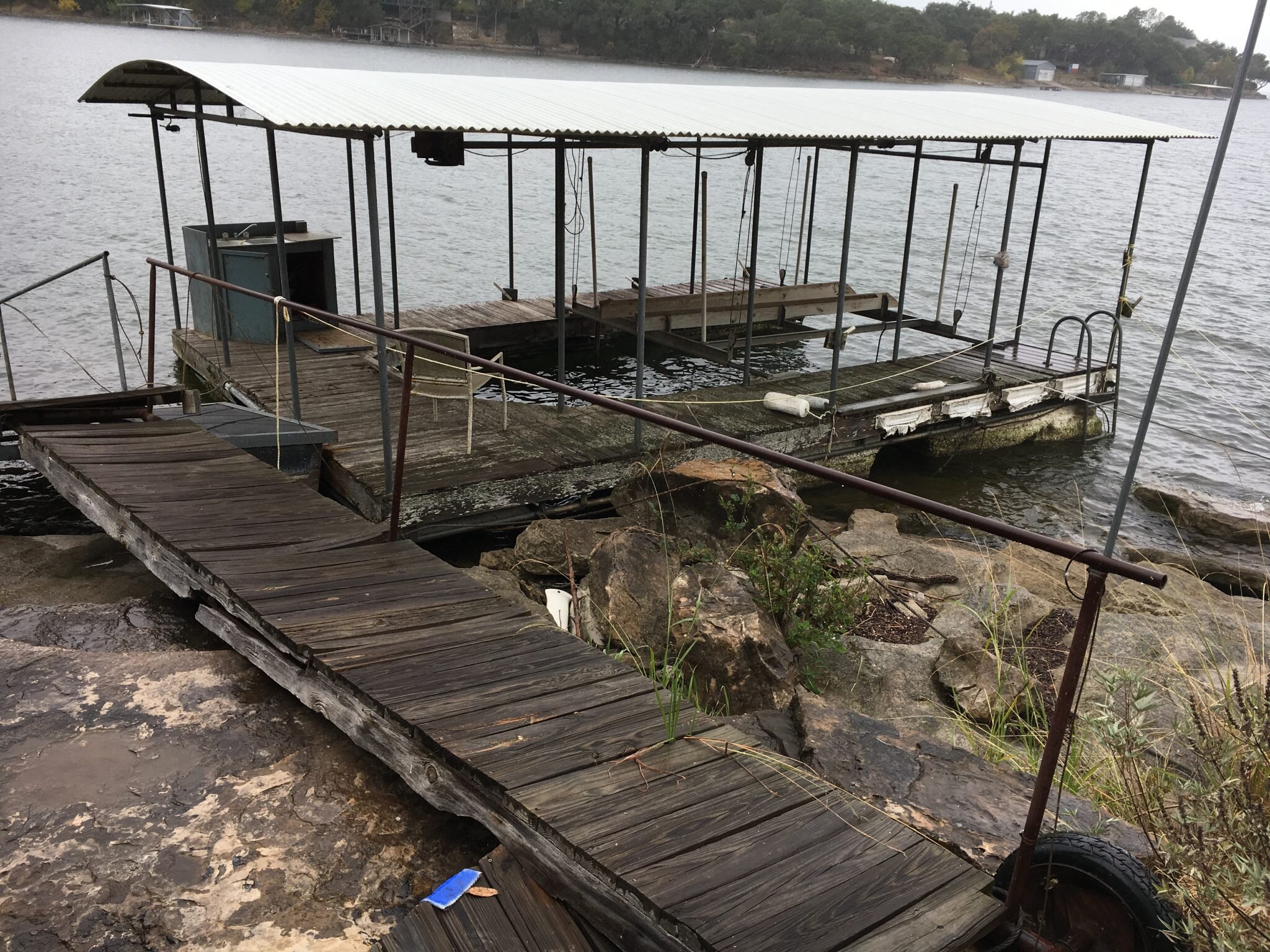Reliable Dock Fixing Techniques: Making Sure Architectural Honesty
Guaranteeing the architectural honesty of anchors through effective fixing methods is vital for the durability and safety of marine centers. This entails a multi-faceted approach beginning with detailed assessments making use of advanced innovations like sonar equipment and remotely operated lorries (ROVs) to identify both noticeable and hid problems. Ultimately, choosing the appropriate fixing materials, such as corrosion-resistant alloys and composite materials, is vital for toughness. Structural support methods, including the execution of cross-bracing systems and load-distribution plates, play a vital function in mitigating anxiety factors. Nevertheless, the significance of these strategies comes to be obvious when exploring innovative fixing methods and preventative upkeep methods.
Analyzing Dock Damage
Assessing dock damages is an essential initial step in making sure the architectural honesty and security of any type of docking facility. This preliminary examination includes a thorough examination to determine both visible and concealed damages. Secret facets to check out include the dock's foundation, pilings, decking, and equipment. Each component should be inspected for indications of wear, rot, corrosion, or various other types of degradation that might compromise the structural stability.
Architectural engineers or qualified inspectors typically perform these analyses utilizing specialized methods and devices. Underwater assessments may utilize finder devices or remotely operated cars (ROVs) to find submerged damage. Above water, visual evaluations are enhanced by utilizing dampness meters and various other analysis tools to reveal underlying concerns not immediately noticeable to the naked eye.

Deciding On Repair Products
Choosing the ideal fixing materials is an essential step in the dock reconstruction process, one that straight affects the durability and performance of the fixed framework. Product choice must be driven by factors such as environmental problems, load-bearing needs, and compatibility with existing dock elements.
In enhancement to timber, composite products are increasingly preferred because of their resilience and reduced upkeep needs. Compounds, usually made from a mix of plastic and wood fibers, use exceptional resistance to rot, pests, and UV damages. For steel docks, picking corrosion-resistant alloys such as galvanized steel or marine-grade aluminum is necessary to avoid corrosion and guarantee structural integrity in saline water problems.
Epoxy resins and marine-grade sealers are essential for fixing fractures and sealing joints, offering a waterproof obstacle and improving the dock's total strength. By thoroughly selecting high-quality materials, dock repairs can achieve lasting results, therefore guarding versus future destruction and making sure risk-free, reliable use.
Architectural Support Techniques
Reliable structural support methods are vital in guaranteeing the stability and long life of dock repairs. This approach is especially reliable for anchors exposed to hefty lots or harsh environmental conditions.
Another crucial method is the application of fiber-reinforced polymers (FRP) These materials use high strength-to-weight proportions and outstanding resistance to corrosion, making them optimal for strengthening wood or concrete docks. FRP can be used in sheets or strips and bound with epoxy resins to enhance structural stability.
Supporting and securing systems also play a crucial function in architectural support. Cross-bracing, using steel or wooden light beams, can combat lateral pressures, decreasing guiding and activity. Anchoring systems, such as helical piers or driven piles, give a secure foundation by transferring loads to much deeper, extra secure dirt layers.
Finally, the assimilation of load-distribution plates can assist disperse weight much more uniformly throughout the dock's surface area, minimizing local stress and anxiety points. These techniques collectively make sure that anchors stay safe and durable, with the ability of enduring the roughness of their functional environment.
Advanced Fixing Methods

One more advanced technique involves underwater welding, which permits fixings to be conducted without the demand to dewater the location. This approach is especially helpful for addressing architectural issues in submerged dock parts, ensuring minimal interruption to operations. Enhanced welding methods, coupled with robotic systems, deliver precision and dependability, consequently prolonging the life-span of the dock.
Furthermore, cathodic security systems are executed to prevent rust in metal dock frameworks. By making use of sacrificial anodes or amazed current systems, these methods properly minimize the electrochemical processes that bring about material deterioration.
Lastly, progressed surveillance technologies, such as architectural wellness surveillance (SHM) systems, provide real-time information on a knockout post the condition of dock frameworks. These systems make it possible for proactive upkeep and prompt interventions, ultimately making certain the lasting structural stability of the dock.
Maintenance and Prevention
Maintenance and avoidance are basic concepts that underpin the durability and safety of dock frameworks. Normal evaluations are vital, enabling for very early detection of damage, possible weak points, and environmental influences. An aggressive approach, involving regular look for rust, rot, and architectural changes, minimizes costly fixings and prolongs the dock's functional life.
Preventative steps need to consist of applying protective finishes to steel parts to defend against rust and making use of treated wood to withstand degeneration. Additionally, guaranteeing appropriate drain and air flow can avoid water buildup, which is a typical root cause of structural deterioration. Including top quality materials and adhering to producer guidelines during building and construction and repair stages likewise play vital roles in enhancing toughness.

Training personnel in dock upkeep ideal techniques makes sure constant application of precautionary measures. Leveraging technological advances, such as drones for website here examinations and sensors for real-time tracking, can even more improve maintenance initiatives. By prioritizing maintenance and avoidance, dock proprietors can ensure architectural honesty, operational safety, and economical management over the dock's lifespan.
Verdict
To conclude, preserving the architectural stability of aquatic facilities necessitates detailed dock repair techniques. Complete inspections utilizing innovative devices reveal both visible and hid damages, while the choice of ideal repair materials enhances resilience. Executing structural reinforcement approaches addresses stress points successfully. Advanced fixing strategies, coupled with regular upkeep practices, ensure the dock stays functional and risk-free under diverse ecological problems. Embracing these strategies dramatically lengthens the lifespan and capability of marine infrastructure.
Guaranteeing the structural honesty of anchors with efficient repair service techniques is paramount for the long life and safety of aquatic facilities.Choosing the appropriate repair materials is a critical step in the dock repair procedure, one that directly influences the long life and performance of the repaired framework.Efficient architectural support methods are critical in making sure the security and longevity of dock repairs. By focusing on upkeep and prevention, dock owners can ensure architectural stability, operational security, and cost-efficient monitoring over the dock's lifespan.
In verdict, keeping the architectural honesty of aquatic centers necessitates thorough dock fixing methods.
Comments on “Usual Concerns That Lead to Pricey Dock Repairs”